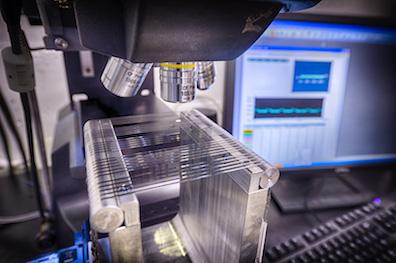![]() Physicists call it the Standard Model. It’s a theory which describes the best current understanding of the building blocks of matter and their presumed interactions. But it’s discoveries well beyond the scope of the Standard Model’s framework which scientists hope will answer some the fundamental questions about matter.
Physicists call it the Standard Model. It’s a theory which describes the best current understanding of the building blocks of matter and their presumed interactions. But it’s discoveries well beyond the scope of the Standard Model’s framework which scientists hope will answer some the fundamental questions about matter.
To do it, the science community is examining a Great Triumvirate of sorts: insights and observations from three frontiers grouped under the umbrellas of Cosmic, Energy, and Intensity studies.
Now those scientists are looking for keystones in the Intensity Frontier via the study of exceptionally rare processes like what’s known as “muon-to-electron conversion.” It’s an ideal problem for them to examine why particles in the same category decay from heavy to lighter, more stable mass states, and physicists have pondered the issue since the 1940s.
Very simply put, electrons are all about action; action like lighting a home or powering a computer. Muons, on the other hand, are “heavier” forms of electrons, but it’s not clear what their relationship to electrons may be, and understanding the relationship is key to understanding electrons.
 A group of researchers working what they call the Mu2e tracker — a device composed of tiny, low-powered circuit boards which sit at the end of “straws” — has only a limited space to include cooling lines. The cooling lines are key to the operation as they wick away heat that would otherwise sit in a needed vacuum.
A group of researchers working what they call the Mu2e tracker — a device composed of tiny, low-powered circuit boards which sit at the end of “straws” — has only a limited space to include cooling lines. The cooling lines are key to the operation as they wick away heat that would otherwise sit in a needed vacuum.
One major hurdle they had to overcome is that machining the curved metal parts with elongated holes to hold the straws was, until now, difficult and expensive. But by utilizing 3D printing to make a high-tech, transparent plastic version, those issues have been largely addressed.
The researchers plan to use a prototype of 3D printed plastic to run a current through the straw and a magnet to “pluck” the straw in the same way a guitar might be strummed. It’s by measuring the resulting vibration that they can set a benchmark to keep the straw straight during the entire lifetime of the experiment.
The idea of the Mu2e project is track the actual conversion of a muon to only an electron without the emission of additional particles. Physicists have predicted that it’s possible, but they’ve never actually seen it occur.
This experiment needs to be some 10,000 times more sensitive than other experiments in the past to track the fast-moving electrons to detect the signature 105 MeV output which would prove muon decay.
In practice, it means the designers working on the Mu2e project need to create a detector which includes very little material — so little, in fact, that it borders on being “nothing” in relative terms.
“You want to detect the electron with nothing – and this is as close to nothing as we can get,” says Vadim Rusu of the Department of Energy’s Fermilab.
The tracker itself is made from thin straws of metalized Mylar, and at only 15 microns thick, they represent the thinnest straws ever used in a particle physics experiment.
The straws are filled with argon and carbon dioxide gas and include a thin wire which runs down the center of the straw. Circuit boards at both ends of the straws are set to gather any electrical signal produced as electrons hit the gas inside the straw, and Rusu says they’ll measure the arrival times at each end of the wire to plot the electron’s overall trajectory.
Do you know of any other scientific projects that have benefited from using 3D printing technology? Let us know in the Rare Particle forum thread on 3DPB.com.
Subscribe to Our Email Newsletter
Stay up-to-date on all the latest news from the 3D printing industry and receive information and offers from third party vendors.
Print Services
Upload your 3D Models and get them printed quickly and efficiently.
You May Also Like
Heating Up: 3D Systems’ Scott Green Discusses 3D Printing’s Potential in the Data Center Industry
The relentless rise of NVIDIA, the steadily increasing pledges of major private and public investments in national infrastructure projects around the world, and the general cultural obsession with AI have...
Formlabs Teams Up with DMG MORI in Japan
In late June, Nick Graham, Chief Revenue Officer at Formlabs, announced on LinkedIn that the company had partnered with DMG MORI, one of the world’s leading machine tool companies, to...
EOS in India: AM’s Rising Star
EOS is doubling down on India. With a growing base of aerospace startups, new government policies, and a massive engineering workforce, India is quickly becoming one of the most important...
3D Printing News Briefs, June 25, 2025: R&D Materials, 3D Printed Veneers, & More
In today’s 3D Printing News Briefs, 3DXTECH has launched a program that gives customers early access to experimental materials, and the first Lithoz CeraFab Multi 2M30 in the Czech Republic...




































